The Muse Model Two is a 20-bit D/A processor using two Burr-Brown PCM63-PK, multibit DACs; an 8x-oversampling digital filter unique jitter-suppression circuitry; and a class-A current source, shunt-regulated power supply. Both balanced and single-ended analog outputs and two BNC digital inputs are standard. AES/EBU and ST fiber optic inputs optional.
Dimension: 17.5 W x 11.5 D x 3.5” H.
Weight: approximately 18 lbs. Price: $1700; add $300 for AESIEBU or $200 for ST-optical input options.
Manuf: Muse Electronics, Garden Grove, Calif. USA.
=== ===
Among the highlights that emerged from the 1995 Winter CES in Vegas, one of the most exciting was the clearly superior musical reproduction possible from processors that included HDCD decoding. An hour-long demo of Spectral’s SDR-2000 HDCD processor left me slack-jawed and inspired. I exited that room convinced that, in the not—too— distant future, we should expect digital playback to offer every bit as much musical expressiveness, nuance and fulfillment as the finest analog (if not more). Whether HDCD becomes a paramount technology or simply a catalyst for larger companies to develop a more complete overhaul of the CD format remains to be seen. I think Pacific Microsonics must get encoders in the hands of a number of the major recording studios this year to prevent an “end-around” by the big boys. Unless a substantial variety of HDCD-encoded recordings becomes available in the near future, the current sonic advantage of using the HDCD filter with non-HDCD-encoded recordings is likely to be equaled or surpassed by other competitors. Also, the prospect of a super-resolution digital format arising from the recently announced, yet unrelated, DVD proposals by Philips/Sony and Toshiba is mouthwatering if a bit premature. However it turns out, the audiophile world owes a debt of gratitude to Keith Johnson, Pflash Pflaumer, and Michael Ritter for their dedication in designing and promoting a genuine advance in digital audio.
In light of this transitional period in digital development, should audiophiles rush out and buy one of the first HDCD-equipped D/A processors? That depends. At the very least, it makes sense to investigate products built around a modular; upgradeable design. I’d certainly think twice about buying a processor that has no capability for being easily upgraded to HDCD or some other improved digital-filtering scheme. After confirming this flexibility, my suggestion is to buy on the overall merit of a product within your budget derived from a careful look at its engineering features, build quality, and sonic appeal—not solely because it has an “HDCD” label on the front. Which, by the way, brings me to the Muse Model Two processor—one of the best-kept secrets in digital audio.
I first heard about the Model Two last fill when a respected high-end manufacturer told me that, during a series of careful evaluations, the little Muse had summarily dispatched some of the most highly regarded processors available. I spent some time at the Muse room during the recent WCES, where many of its special qualities were evident in spite of a less-than-ideal room in the Sahara Hotel’s bi-level complex. Immediately after my return from Vegas I acquired a Model Two for audition in my reference system. It wasted no time proving that it was filly up to the standards of the rest of my system, and that it was competitive with my long-term favorite, the Theta Generation V.
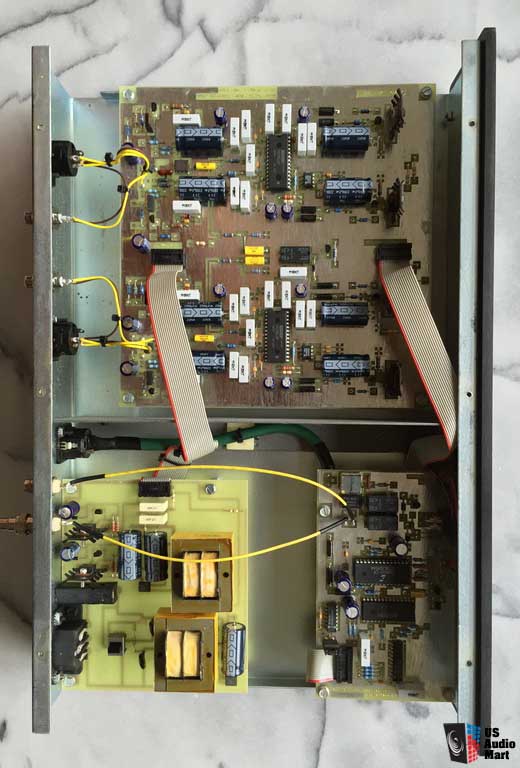
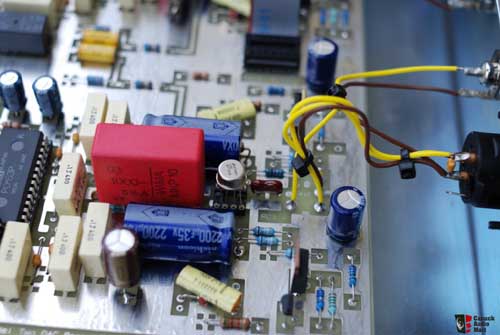
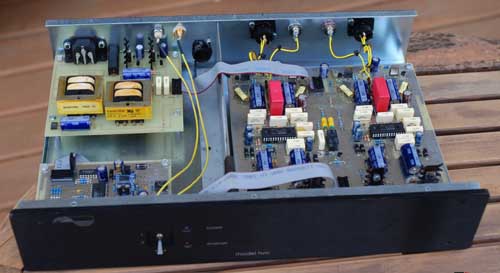
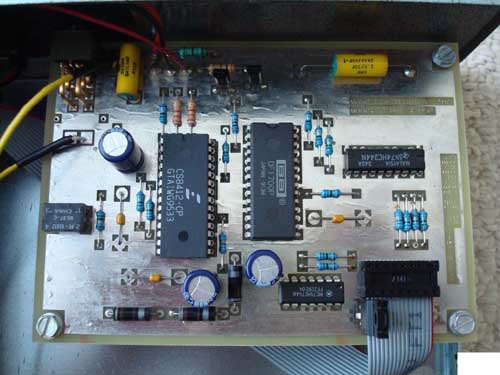
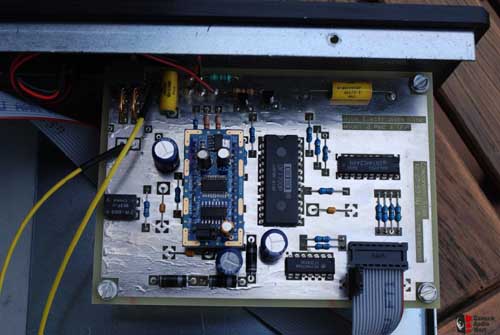
A REAL-WORLD DIGITAL REFERENCE
Best known for their highly regarded Model Eighteen powered subwoofer, Muse Electronics has developed a well- deserved reputation for affordable excellence with the three models making up their Series II group of amplifiers: the 160 stereo amp and the models 175 and 300 monoblocks.
Kevin Halverson, vice-president and chief engineer at Muse, is well-respected among fellow peers in the design community for his in-depth knowledge of analog electronics. His talents in power supply, circuit topology, filtering, and RF design were well—complemented by those of Dr. Graham Hardy during their collaborative design of the Model Two. Dr. Hardy is a physicist, researcher, and design engineer with a broad scientific background. (He currently works as a design engineer with Safetran Systems.)
These fellows are clearly not simply enthusiastic audiophiles who decided to throw a bunch of fancy parts into a formulaic processor. What impresses me most, after studying their choices in detail, is that they never lost sight of the big picture. Instead of merely following accepted conventions for processor design and then adding “marquee parts to the process, Kevin and Graham examined each step of the signal path from input to output as an analog system that just happens to process a squarewave through a portion of its circuitry.
This fresh perspective resulted in a more direct and elegant way to skin the cat in several major areas. In the process, they produced a digital processor of true reference quality that’s entirely modular in construction and retails for just $1700! (Add $300 for an AES/EBU input and $200 for an ST fiberoptic option.) The Model Two stands apart from the plethora of under-$2000 DACs by breaking the mold on several fronts, and honestly deserves the overused monikers “unique” and “innovative”.
A MATTER OF RF SUPPRESSION
Much of the cost savings was achieved by forgoing an artistic statement in the chassis. The anodized faceplate, available in either black or silver, is the main con cession to cosmetics. It looks attractive in an understated manner. The rest of the chassis is a simple though sturdy steel enclosure. One of Kevin’s prime objectives in designing the Model Two was to make a processor that was RF-friendly within its surroundings, and, above all, one that could be left on without degrading analog playback. In this he succeeded handily. The processor passes the transistor—radio test better than any other I’ve examined, and is actually quieter than some preamps within the frequencies picked up by the rather crude radio test.
In addition, I can turn the volume up on my analog input, raise the tonearm, and turn the processor on and off with out hearing any change in the character of the white noise—a first for me. The chassis, though straightforward, forms an effective RF barrier. Interior steel panels are carefully formed and coated with a clear zinc coating in a manner that greatly reduces RFI/EMI while providing some degree of AC magnetic shielding.
Inside the unit a plate runs from front to back, shielding the analog board from its separate power supply and digital receiver/filter boards. Each of these three boards can be exchanged with a screw driver and a couple of solder joints, and are logically divided to f the most likely future improvements in digital technology. This is one processor whose upgrade path is genuinely simple and should be very affordable. A further testament to the build quality of the Model Two is found in the construction of these circuit boards. Both the digital receiver/filter and the analog boards have a complete ground plane covering nearly their entire surfaces. As a result, a low— impedance ground connection is very close to every critical stage, minimizing circuit-loop area and resulting RFI/EMI problems.
In addition to 11,000uF of storage capacitance (the analog board has an additional 19,760uF for a total storage capacitance of over 30,000uF) and an adjustable mains—voltage switch, the power-supply board features three bridge rectifiers and a superb custom—made transformer providing five secondary discrete supplies, each isolated from the primary side of the transformer by individual electrostatic shields, which in turn are tied back to the IEC connector’s ground pin. For this reason, do not attempt to float the ground on this DAC.
A MATTER OF JITTER SUPPRESSION
Adjacent to the power-supply board are three inputs, selected by a front—panel toggle switch: an XLR connector for AES/EBU interface, and two BNC connectors in place of the usual (and inferior) RCA jacks. A blue LED lights up to indicate data lock; a red LED indicates if the disc has been pre—emphasized. By the way, I found Cardas’s new AES/EBU cable to work exceptionally well with the Model Two. These inputs are routed through high-quality pulse transformers on the separate receiver/filter board mounted near the front panel of the chassis.
Current production versions of this digital board contain the popular Crystal CS8412 input receiver and a Burr-Brown 8x oversampling digital filter. This is where the similarity to so many other high-end processors ends. A CS8412 has a fairly good inherent clock-recovery capability that’s often poorly utilized in other processors. Muse adopted a rather simple modification to the supporting circuitry in the Model Two that they claim resulted in improved jitter rejection and a lower jitter-cutoff frequency than is achieved by the CS8412 alone.
Unfortunately, most processors are unable to maintain the cleaned-up dining reference established after the signal has been reclocked at the receiver. The clock signal travels through the digital filter on its way to the actual DAC input— where it really counts, regardless of which of the popular input receivers is used. Most digital filters actually degrade jitter performance through additional timing artifacts arising from the uncorrelated clock used for the Arithmetic Logic Unit (ALU) within the filter. Additional jitter degradation after the input receiver can also develop due to noise.
At the beginning of the design process for the Model Two, for example, Muse’s designers noticed a curious anomaly in many of the processors they tested. When they looked at digital signals with a high-speed digital storage oscilloscope, they found the signal in these units to have nearly 7V of peak-to-peak energy. Something was obviously wrong, since the power supplied only 5V! The two additional volts were coming from “ground bounce” and “overshoot.”
Overshoot and ground bounce result from the underdamped characteristic created by the output of digital-signal lines and the reactive load they see While these problems don’t directly affect digital data, they are totally unacceptable to the analog circuitry of which a processor is principally made. As a result of these findings, the Model Two uses an impedance-matching transmission line with filtering to correct for these errors on each digital signal line. In addition, a high-speed data buffer is used between the various stages of the Model Two, further reducing these problems.
While these steps addressed the immediate problems, additional measures were deemed necessary to protect the integrity of the all—important latch—enable signal. This determines the timing reference for conversion of the digital signal back into analog. According to Kevin, by using a clever latching scheme, the jitter generated by the digital filter is bypassed altogether. As a result, the timing accuracy of the input receiver is maintained through to the DACs without resorting to the use of a secondary phase-locked loop (PLL), which Muse feels can create additional noise and EMI problems.
In order to ensure the integrity of the recovered clock and further improve its jitter performance, the latch-enable signal in the Model Two is split differentially and sent to the DACs as a balanced signal. A very-high-speed differential comparator receives this balanced digital signal on the analog board at the nearest possible physical location to each of the two Burr-Brown PCM63 DACs. These comparators have very high common— mode rejection and essentially ignore any remaining power-supply and ground fluctuations in the digital signals just prior to conversion back into analog by the DACs. As a result of these unique and creative steps, the real-world jitter performance of the Model Two should be outstanding.
DIGITAL CONVERSION
The popular 20-bit PCM63-K DAC is used m some of the world’s best processors like the Theta Generation V. “Co-linear” in design, it contains two internal 19-bit DACs configured as upper and lower current sources that help to reduce glitch energy around digital zero. Muse adopted an unusual supporting circuitry for the ‘63. Most processors use either an active or discrete op-amp stage to perform the very important and tricky current—to—voltage (I/V) conversion at the DAC’s output. Halverson and Hardy felt that this method had serious audible drawbacks.
Ideally, this conversion should take place instantly and with little to no settling time. Unfortunately, all op-amps, whether active or discrete, have some degree of slew-rate and settling-time limitations, which will add nonlinearities to the I/V conversion. To address this problem, Muse selected the simplest possible device for this critical conversion: a single precision resistor. By using a single resistor for the I/V stage, virtually all conversion errors are eliminated, and a very low and constant impedance signal is established for the final reconstruction filter. In addition, this “purist” solution allows the use of passive filtration for the first stage of the final output filter, which means that only a single gain- stage is needed to amplifier the analog signal for its journey to the preamp or amplifier. [ penalty paid for using a passive I/V is higher noise and/or a lower out put level, as will be seen later.]
BALANCED BUFFERING
By now it should come as no surprise that Muse eschewed the traditional approach for the final gain stage. The Muse Model Two uses a patent-pending design by Kevin Halverson called the “Uni-Block Differential” (UBD) gain stage. In essence, the UBD stage is intended to emulate many of the desirable qualities of a good output transformer. It allows any bipolar power- supply device (whether integrated or discrete, and operating as either a follower or a gain stage) to simultaneously generate both phases of a differential signal. Like a transformer, the differential voltage present at the output is fixed, but the absolute values in relationship to ground are allowed to float.
One attribute of the UBD stage is that it provides complete protection against direct shorts of either terminal. If either leg is grounded, the other simply becomes referenced to the grounded connection. Known as cross—coupling, this concept has only been employed in the past through the use of two separate op-amps operating in inverting and non- inverting configurations. Unfortunately, since these two different configurations have varying characteristics, common- mode rejection can be compromised at the input of a following preamp.
Since the UBD design accomplishes the benefits of cross-coupling with a single gain element, the characteristics of each phase of the signal are identical (just like a good transformer), and common- mode rejection is thus excellent. The UBD gain stage can drive a filly balanced and single—ended signal simultaneously, so the Model Two has both RCA unbalanced outputs and balanced XLR analog connections. (I must admit I don’t fully understand how the UBD accomplishes this cross-coupling with a single gain element. After Muse releases the patent information, I hope to share the particulars with you in a Follow-Up.)
Muse chose the outstanding Analog Devices AD846 op-amp for the heart of this final gain stage. While conventional high-end wisdom of even just a few years ago insisted on avoiding monolithic op amps in favor of custom discrete amplifiers, that’s no longer always true. A number of modern op-amps have incredible performance that even the best analog designers will be hard-pressed to duplicate, much less exceed. Devices such as the AD846, AD797, AD811, and Burr-Brown OPA-206 can produce stellar results in the right hands. The topology in which these op-amps are used makes all the difference in getting the most out of their potential. To fully exploit the 846, a very-low-impedance environment is required, and this is where the UBD (along with the unusual power-supply configuration used in the Model Two) comes into play.
CLEAN POWER
So far I have primarily discussed signal path elements, yet as most audiophiles know, the quality of the power supply ties it all together. Consistent with every other design choice in the Model Two, an unusual and highly effective power- supply topology was adopted. Most high-end processors show careful attention in implementing traditional series- regulated power supplies with multiple stages of regulation in order to isolate critical circuits.
Commercially available series-regulator IC normally used inmost processors (as well as in many amps and preamps), vary in quality. Some are obviously better than others, yet they all suffer from similar problems. Their output impedance can increase considerably with frequency, for example. As a result, the ability of these devices to supply a clean voltage rail to the regulated stage be comes progressively compromised as the frequency of power-supply noise increases. None of the commonly available devices has good performance in the megahertz range, so the Muse engineers made an attempt to improve on these integrated series regulators through good analog- design techniques. However, after some painstaking attempts with only slight improvements to show for it, the de signers were forced to take an entirely different approach for the power-supply topology in the Model Two.
What they came up with is a current- source, class-A-biased, shunt-regulated supply in place of the standard series-regulated design. This shunt-regulated supply employed throughout the Model Two has eight separate stages of regulation plus multiple levels of filtering using very carefully constructed low-pass filters composed of hybrid capacitors and special inductors at each critical stage. For instance, a second—order low—pass filter using a series shielded inductor and parallel capacitor made from three different capacitors in parallel, each chosen for its complementary electrical properties, isolates every voltage rail feeding the DACs.
A shunt-regulated supply such as this one has several important benefits. For instance, it provides very low RF noise levels, and low source impedance even at very high frequencies. The Model Two features an extremely “loose” connection between the raw power supply — meaning the power transformer, bridge rectifiers, and filter caps—and the supply rails it feeds. So the amount of current sourced is limited yet constant, due to class-A operation. At the same time, a very “tight” connection, providing a nearly unlimited current sink, is established between those supply rails and a very-low-impedance ground through the use of Zener diodes. As a result, significant decoupling or isolation is achieved between any two separate stages sharing a connection to the same raw power supply. In addition to the desirable attributes of a very low impedance to ground, the carefully implemented shunt-regulated power supply found in the Model Two is claimed to significantly reduce the impact of power-line quality on the performance of critical circuitry. (Incidentally, shunt regulation is also employed in the gorgeous electronics made by Ryan Sutherland.)
In many respects this appears to be a near ideal power supply, offering many of the benefits of battery power without the expense and weight. Like most things, however, it does have a few drawbacks. Generally, implementation of shunt regulation is more costly, and it’s not very efficient. In the Model Two, there’s a constant draw of nearly 12W, and this excess energy is thrown off in the form of heat. Twelve watts, on the other hand, is a small price to pay for the dramatic improvement in sound quality that Kevin claims the shunt regulation provides compared to a series—type design, and the excess heat is actually utilized in this processor to help keep sensitive internal components at a more constant temperature.
IDIOSYNCRASIES
The Model Two’s innovative design does result in one other noteworthy compromise. A disadvantage in using a resistor for I/V conversion is that the output voltage is quite low, requiring a higher- than—usual amplification. This puts a greater burden on the final gain stage to be extra quiet. In order to minimize the impact of a higher-gain circuit, Muse has chosen a rather low 1V output for the Model Two. The industry-standard output is just above 2V, while many processors have output levels from 4 to 7V or even higher.
Certainly 1V is ample to drive most active preamplifiers to full level, but it does preclude using the Model Two with passive control units. A special 2V version of the Model Two is available, but I understand it offers a small sacrifice in sound quality due to the slight increase in noise resulting from the additional gain. I found no volume limitations when using the Model Two with the Sonic Frontiers SFL-2, the Rowland Consummate, or Rowland’s new ultra-resolution, battery-powered Coherence preamplifier.
Indeed, the Model Two’s low output made the unit ideal for evaluating the sonic qualities of these preamps. By set ting the gain on my Rowland Model 6 amplifiers to 32dB, 1 could drive them directly with the Muse and achieve a comfortable volume level of around 87dB. Then, by simply reinserting the preamps and level-matching their volume to the direct connection, I could easily hear the actual sonic signature of each preamp without the compromise involved when using a separate passive attenuator, as is common in most “bypass” tests.
THE BIG PICTURE
As I mentioned earlier, the ability of the Muse design team to keep the big picture in focus while adding so many truly innovative details to the Model Two is laudable. At every step of the design, minimizing the impact of RF was a big priority. Even the ribbon cable connecting the digital board to the analog board has a separate ground conductor running on either side of a data conductor, and each analog output contains a first-order, low-pass filter built into its corresponding connector to minimize the amount of RF sent to the rest of the system.
Examined in detail and as a whole, the Model Two is a remarkable engineering feat. One listening session was all it took to realize that all the hard work of the Muse design team paid off big time.
SYSTEM
My current setup includes an Immedia RPM-2 turntable and uni-pivot arm equipped with a Lyra DaCapo cartridge; a Rowland Consummate line and phono stage, and, alternatively, a Sonic Frontiers SFL—2 all—tube line preamplifier; Theta’s balanced Generation V DIA and Data Basic transport; two pairs of Rowland Model 6 monoblock amplifiers; as well as a pair of Audio Artistry Dvoraks—a bi-amplified, dynamic dipole speaker with active crossover that I find particularly noteworthy.
Both the new Cardas Golden Cross and Discovery Signature interconnects were employed to good effect, though I relied mainly on the Cardas, since I had a full set in balanced configuration. The Golden Cross interconnects also proved to be a quieter, more transparent, and detail-rich conduit between the various components used than did Cardas’s previous Golden 5-C series. Speaker cables used in this evaluation included the new MIT 850 and 770 Terminators, Cardas Golden 5-C, and late appearances by Be Yamamura’s Millennium 5000 as well as TARA Labs RSC 5000 Master 2 series.
A variety of accessories—such as the sturdy Mike Frederickson equipment stands, Newport and Vibraplane pneumatic isolation platforms, a Townshend Seismic Sink, and resonance-control products by D.J. Casser and Matigo—were joined by several other new additions to my reference system that significantly elevated the system’s overall resolution; they have also in turn made this evaluation more revealing. I hope to cover some of these products in future reports. Additionally, I found the latest versions of the Power Wedge 116 and 110, sporting a much-improved internal filter, very helpful in minimizing power-line noise (downtown Honolulu is notorious for RFI).
Finally, the new monster (107 lbs!), transformer-coupled, battery-powered Rowland Coherence preamplifier arrived in time to lend its standard-setting level of resolution to the evaluation.
THE SONIC GOODS
I have little to say about the Muse Model Two’s sonic character, as it seemed particularly devoid of one. However, the unit did convey many musical attributes, most notably a refined delicacy combined with incredible focus and transient purity. The Model Two was neither romantically softened, as some ors are (perhaps to cover up deficiencies in low-level resolution), nor did it possess even a hint of the grain or edge found in some less-worthy offerings lacking this processor’s refined precision and portrayal of subtle detail.
The Model Two conveyed awesome bass definition and extension rivaling anything I’ve heard in digital, which established a welcome weight and authority to all forms of music. Its ability to clearly delineate leading—edge transient information, combined with a pure, grain-free unveiling of low-level detail, resulted in a beautiful rendition of dynamic contrast within any musical passage. In turn, this adept portrayal of dynamics on both the small and large scales, along with its first-rate bass performance, culminated in a realistic sense of the pace and drive that gives music so much of its life. In short, this processor connected me to the musical thread tying everything together to a degree I’ve rarely experienced with digital. In this regard, the Model Two more closely resembled the best of analog.
As I mentioned above, the Two was notably free of an inherent sonic signature. I’ve heard many processors that subtly round off the leading edges of transients so as not to emphasize the tendency for digital to sound edgy; as a result, they can sound somewhat darkened. Additionally, fine low-level detail and clean decay of notes is often sacrificed in the process. With the Model Two, these compromises were notably absent. The synergistic influence of the many design innovations mentioned previously obviously pays off in allowing the Model Two to successfully walk the fine line of transient definition, purity, and dynamic impact rather than fall into either the edgy and harsh or the slurred and veiled camps. Decay of harmonics was also portrayed with clarity and grace, lending a potent feeling to inter-transient silence.
The Theta DS Pro Generation V
Much has been written about the Theta DS Pro Generation V, which I still consider among the best D/A processors available. I level-matched the Muse Model Two and my Gen. V to within 0.04dB (with the help of the two remote-con trolled Rowland preamps) and drove them both with, in turn, the Theta Data II, the excellent Theta Data Basic (which I like even better than the recently discontinued Data II), and the Micromega T- Drive transport.
Qualitatively, the two processors were surprisingly close. They sounded remarkably alike when properly level- matched—as should be expected from reference—quality processors that don’t editorialize much and use the same DAC chips’. That many processors using the same DACs don’t sound similar is testament to varying levels of designer skill, or indicates a deliberate choice to tailor the sound toward a desired tonal balance.
Perhaps because of its DSP filter, the Gen.V had the very faintest edge in the dimensional aura of harmonics emanating from an instrument. For instance, the spray of cymbal after tones on Tiger Okoshi’s Two Sides to Every Story (JVC 2039-2) seemed to project in all directions through both processors, but with the very slightest possible nod in expansiveness going to the Gen. V. Keep in mind that the Muse was excellent in this area as well, and making this distinction in dimensionality without careful matching and repeated comparisons would be impossible. That’s how close they were to one another in this area.
On the other hand, the Model Two had a slight yet notable advantage over the Gen. V in transient purity, focus, and rendition of very fine inner detail. Also, the Muse seemed to possess a bit more grip and definition in the bass—a traditional Theta strong point. Again, these differences were subtle, yet certainly perceptible.
Overall, the Theta seemed to sound ever so slightly smoother, with a softer rounding of transient edges, while the Muse was spot on in its ability to accurately capture transient attack and subsequent decay, resulting in impressive rhythmic drive.
Both processors were hard to fault in soundstage presentation. Stage width and depth sounded limited only by the recording. More importantly, the distinction of individual instruments in orchestral settings under intense crescendos was well—delineated and beautifully rendered. In this area the Muse was spectacular, due largely to its out standing transient performance and focus.
Not surprisingly, the separation of individual voices in a large choral setting was magnificent. Reference Recordings’ wonderful Postcards CD (RR-61CD), performed by the 200-member Turtle Creek Chorale, is a knockout both musically and sonically, and has become one of my favorite reviewing tools. It contains the richest variety of music, covering many styles and a broad range of dynamics. On “Sakura,” the purity of the fundamental notes from a solo flute through the Muse Model Two was awe some. Neither did the Muse harden up or become flustered with the rich tapes try of exotic percussion combined with intense massed vocals.
I should note that my DS Pro Generation V was made in March of 1994, a year ago as I write this, and that Theta constantly refines their products. I’m told current versions of the Gen. V sound even better than mine. Graham Hardy, on the other hand, has recently developed a DSP filtering system for the Model Two, which should be ready by the time you read this, as an affordable and easy upgrade for existing Model Two owners. This filter will include a special buffer and two new-generation, high-speed DSP computer chips that will implement a custom software algorithm that’s said to be truly adaptive in nature. In other words, this new filter will analyze the data as it enters the buffer and optimize the response, on the fly, for either improved time — or frequency-domain performance. In the near future, both Theta and Muse will likely also offer an HDCD option in conjunction with their advanced filtering schemes.
MEASUREMENTS:
As explained in the review, the Muse Model Two had a very low output level, due to the passive current—to—voltage conversion used. A 0dBFS 1kHz tone measured just 0.98V from the unbalanced outputs and 0.94V from the single-ended outputs. The roughly 1V output level is, however, still sufficient to drive virtually all preamplifiers to full level. Output impedance was a low 150 ohms (single-ended) and 50 ohms (balanced) at any audio frequency. I measured 4.5mV of DC offset at the left- channel output, and 1.4mV from the right-channel output. The DC levels were the same at the balanced and single-ended outputs. The Model Two had no trouble locking to 32kHz and 48kHz sampling rates, and the unbalanced out puts didn’t invert absolute polarity.
Fig.1 is the Model Two’s frequency response and de-emphasis error. We can see a 0.7dB rolloff in the frequency response at 20kHz—higher than the typical 0.3dB rolloff. At 10kHz, the response is down by 0.3dB. This may be very slightly audible as a reduction in top—octave air. Also note the channel— level imbalance, with the right channel (dotted trace) measuring about 0.2dB higher in level than that of the left channel. The dc—emphasis error (lower pair of traces in fig.1) was negligible.
The Model Two’s crosstalk performance (fig.2) was moderately good, measuring 100dB at 1kHz (right channel), and 112dB (left channel). This difference in left-right/right-left crosstalk is unusual but not unique.
A spectral analysis of the Model Two’s output when decoding a 1kHz, -90dB dithered sinewave (fig.3) shows some 60Hz and 120Hz power-supply noise present in the analog signal, but at a low level. This noise was present no matter how many different grounding connections I tried between the Model Two and the AC line, and between the Model Two and the Audio Precision System One. We can also see what looks like a trace of second-harmonic distortion in the right channel, seen as the tiny peak in the dot ted trace at 2kHz. Extending the measurement bandwidth to 200kHz and driving the Model Two with an input signal of all zeros produced the plot of fig.4. There are no spurious components above the audioband.
The Model Two’s linearity (flg.5) was excellent, with virtually perfect performance to below -100dB. The Model Two’s good linearity is reflected by the superb noise-modulation performance shown in fig.6. The traces are very tightly grouped, indicating that the Model Two’s noise floor doesn’t shift or change its spectral balance as a function of input level. Looking next at the Model Two’s reproduction of a 1kHz, -90dB undithered sinewave (not shown), a f amount of audioband noise overlaid the wave form. Despite the noise, the step size appeared uniform.
The Model Two’s intermodulation spectrum (fig.7), made by performing an FFT on the Model Two’s output signal while it decodes data representing a full scale mix of 19kHz and 20kHz tones, showed excellent performance. The 1kHz difference component is barely visible, and the rest of the spectrum is free from IMD components. This is as good as I’ve measured in any converter.
I next measured the Model Two’s jitter performance with the Meitner LIM Detector. The signal source was a PS Audio Lambda playing signals from the CBS Test CD. The measurements were taken at the 8x-oversampling word-clock pin on the PCM63 DAC. Fig.8 is the jitter spectrum when the Model Two was driven by a full-scale, 1kHz sinewave. There’s some periodic jitter energy at 2kHz, but this spectrum is much cleaner than that of many processors when reproducing a full-scale sinewave (see the jitter spectra elsewhere in this issue for the Audio Alchemy DAC-MAN and DDE v for comparison).
The RMS jitter level, measured over a 400Hz-22kHz bandwidth, was a low 130 picoseconds. This RMS level dropped slightly to 115ps when the Model Two was driven by an input signal of all zeros (the spectrum is shown in fig.9). With a 1kHz, -90dB sinewave input, the RMS jitter level increased to 340ps, and the jitter spectrum became decidedly more periodic in nature (fig.10). We can see spikes of jitter energy correlated with the test-signal frequency and its multiples.
The Muse Model Two processor had better-than-average bench performance The low—level linearity was excellent, as were the noise-modulation performance, jitter rejection, and intermodulation spectrum.
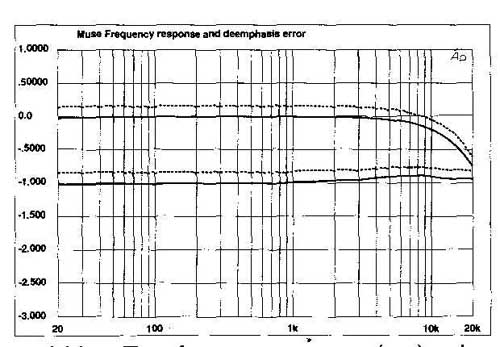
Fig. 1 Muse Two, frequency response (top) and de-emphasis error (bottom) (right
channel dashed, 0.5dB/vertical div.).
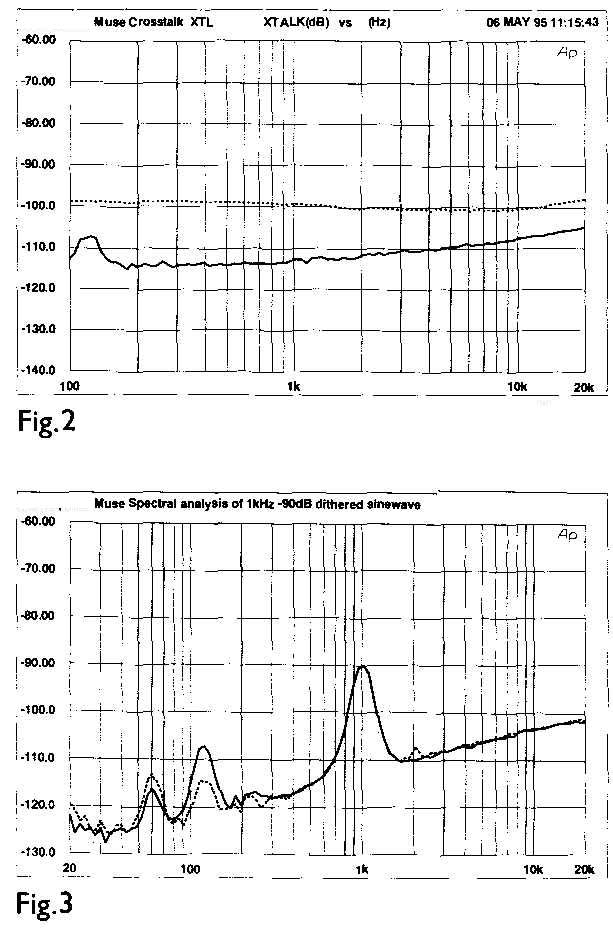
(top) Fig.2 Muse Two, R-L crosstalk (L-R dashed, 10dB/vertical div.). (above)
Fig.3 Muse Two, spectrum of dithered 1kHz tone, 16-bit resolution, at -90.31dBFS,
with noise and spuriae (1/3 octave analysis, right channel dashed).

Fig.4 Muse Two, spectrum of digital silence, 16-bit resolution (1/3 octave
analysis, right channel dashed).
Fig.5 Muse Two, departure from linearity (right channel dashed, 2dB/vertical div.).
Fig.6 Muse Two, noise modulation, -60 to -100dBfs (10dB/vertical div.)
Fig.7 Muse Two. HF intermodulation spectrum, DC—22kHz, 19+20kHz at 0dBFS (linear frequency scale, 20dB/vertical div.)
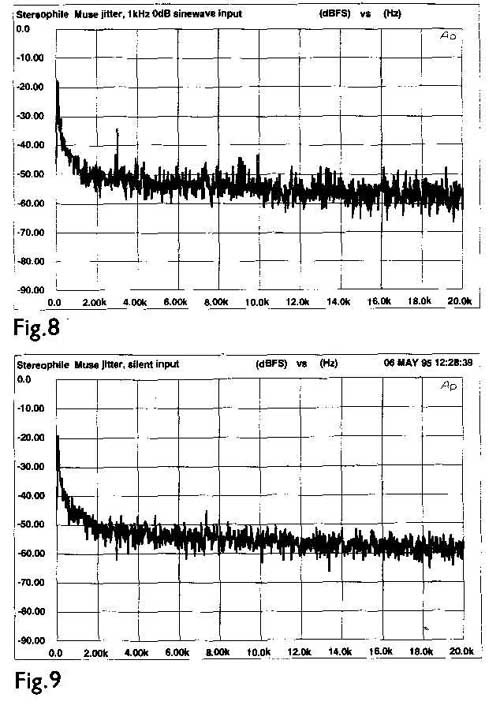
Fig.8 Muse Two, word-clock jitter spectrum, DC—20kHz, when processing 1kHz
sinewave at 0dBFS, PS Audio Lambda transport (linear frequency scale, 10dB/vertical
div. 0dB = 1ns).
Fig.9 Muse Two, word-clock jitter spectrum, DC—20kHz, when processing digital silence, PS Audio Lambda transport (linear frequency scale, 10dB/vertical div., 0dB= 1ns).
Fig.10 Muse Two, word-clock jitter spectrum. DC—20kHz, when processing 1kHz sinewave at -90dBFS, PS Audio Lambda transport (linear frequency scale, 10dB/vertical div., 0dB= 1ns).
= = =
REVIEW CONCLUSION:
The Model Two is the first digital product from Muse, and dearly demonstrates that Kevin Halverson and Graham Hardy belong among the elite of high- end designers. I hope to try their new remote—controlled preamp in the near future, and look forward to continued advances in the Model Two (I bought one).
You should take care not to exaggerate my comparisons between the Generation V Theta and the Muse Model Two. The Gen.V is an established standard of excellence, and my intimate familiarity with it merely served as a natural reference for highlighting the extraordinary accomplishments of the Muse Model Two. The bottom line is that both of these processors are world—class references that offer the kind of modular upgrade path that secures your investment for the future That the Muse is able to achieve this level of performance for under $2000 is truly remarkable!
I want to emphasize that the Gen.V is fairly priced, with its larger, more elaborate chassis loaded with expensive parts; it remains one of my favorites. The Model Two simply shows what can be done with clever execution and design when accepted conventions are reevaluated from input to output.
Muse is currently working on a magnetic I/V converter, which Kevin Halverson claims is about the only possible way to improve on the conversion scheme currently used in their design. If all goes well, this new magnetic stage should be available by the end of the year. The prospect of adding the new DSP filter, a possible HDCD upgrade, and a magnetic I/V converter to a processor already so fundamentally good is tantalizing. In the Meantime, if you’re looking for a reference digital processor with the flexibility to grow with the technology while putting a grin on the face of die hard analog devotees, you must check out the Muse Model Two—regardless of your budget.
===
FOOTNOTES:
2. Take a portable AM radio and set the tuning dial between channels, say at the bottom of the AM band. Turn off your system, then turn the radio volume up a bit and get a baseline for how the interstation noise sounds away from your gear and other surrounding components. Next, turn on the device you want to test and slowly wave the radio all around the unit, with the antenna at different angles and distances from the tested product Try the same test with all the other gear turned back on.
With many “noisy” digital products, you’ll find a wide array of “birdies,” beat frequencies, and other obvious interference relative to your baseline noise Try the test at various interchannel frequencies along the scale as well. While fairly crude, the radio test does allow you to cheaply and easily compare how RF certain products may be.
3. Early PS Audio digital processors also used a passive I/V stage.
===
== == ==
(adapted from review in Stereophile, July 1995)
== ==
ALSO SEE: Muse Electronics offical site
== == ==